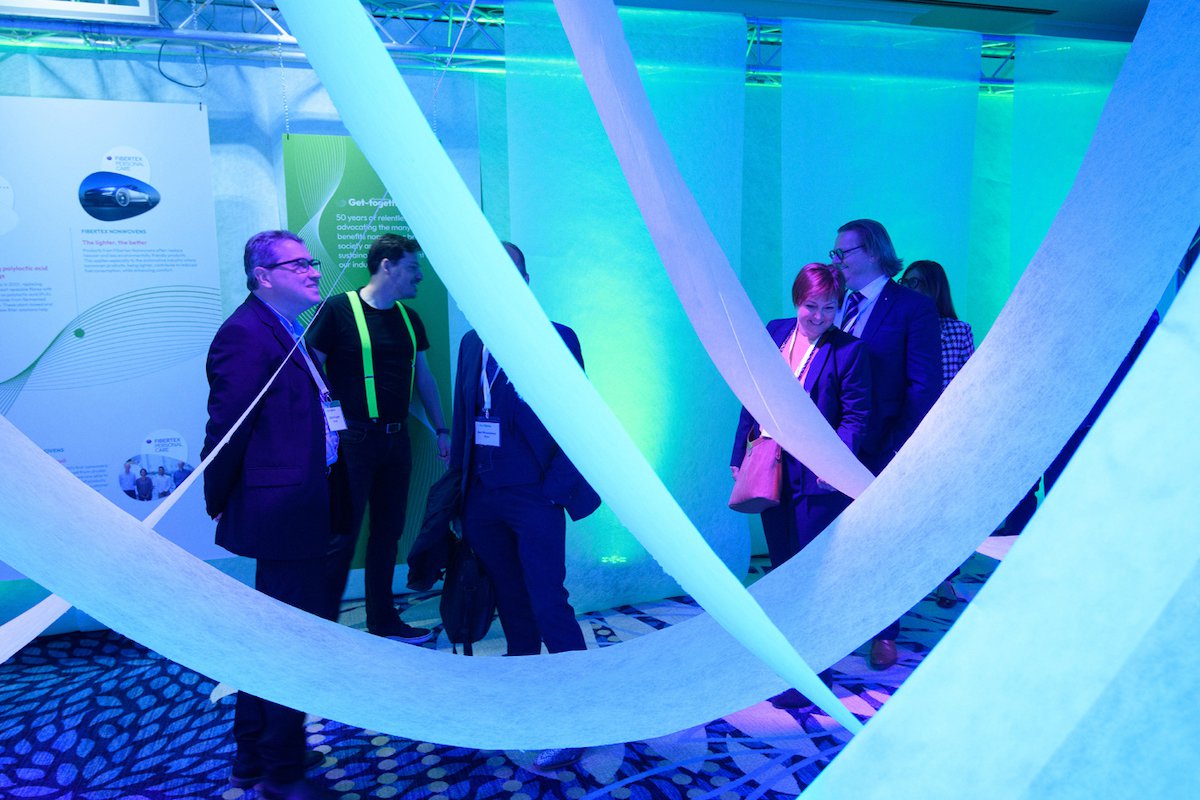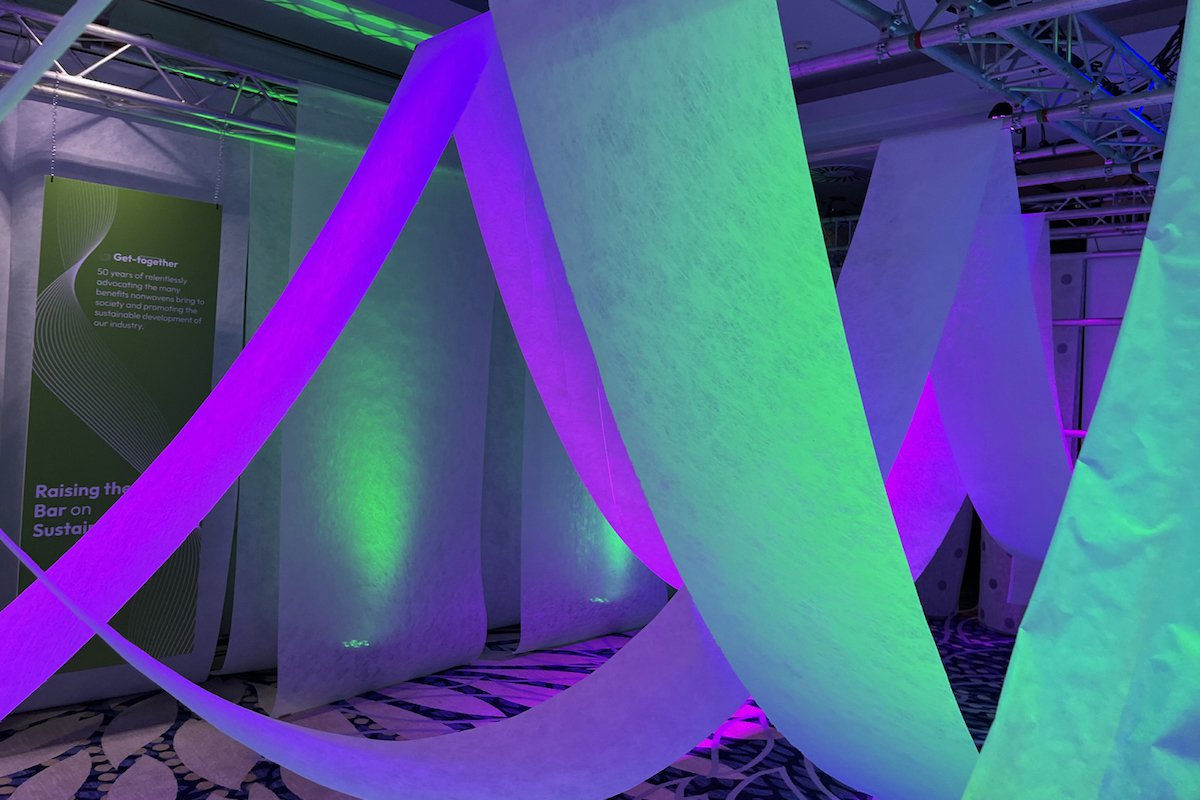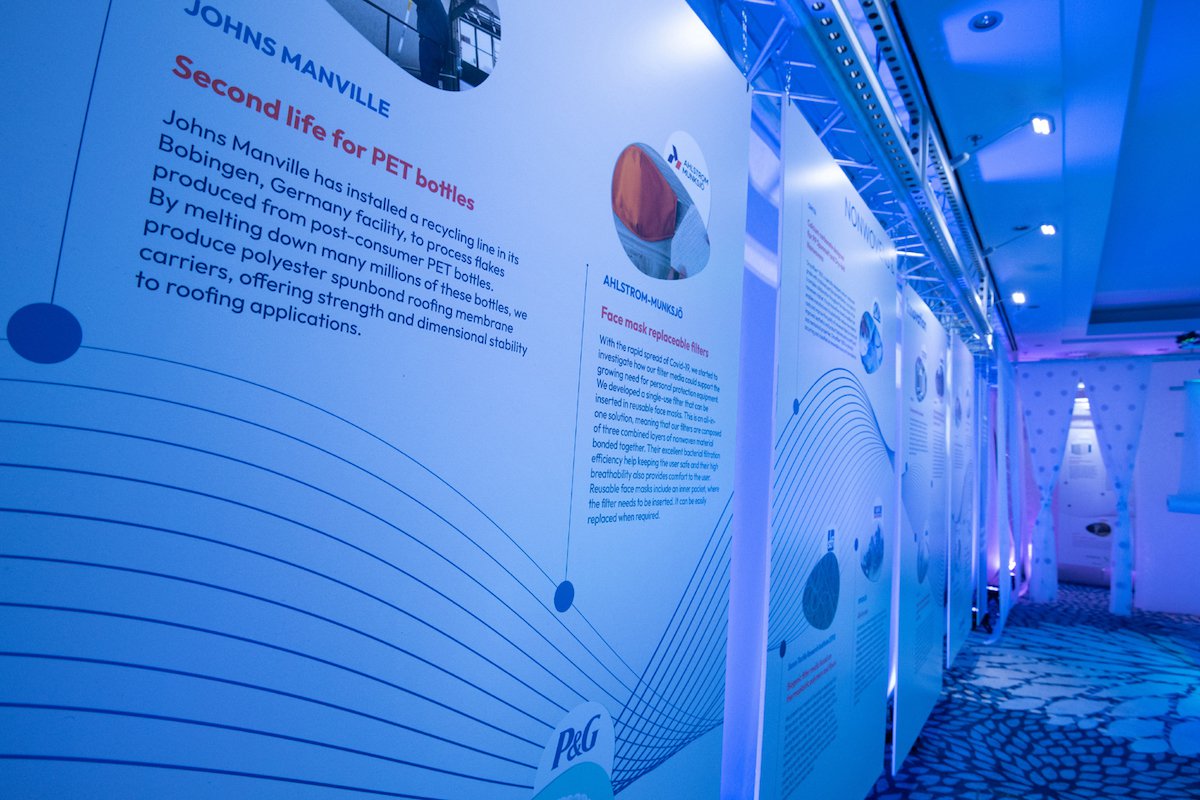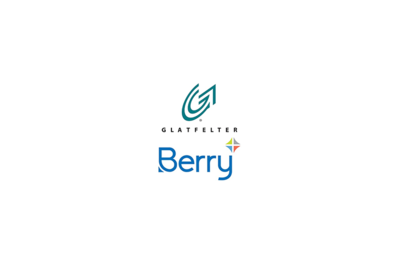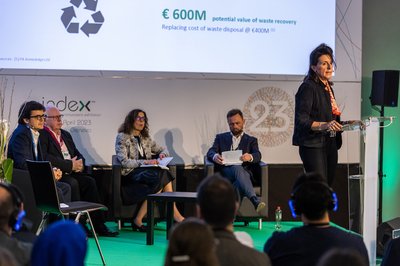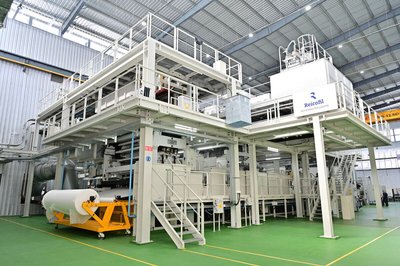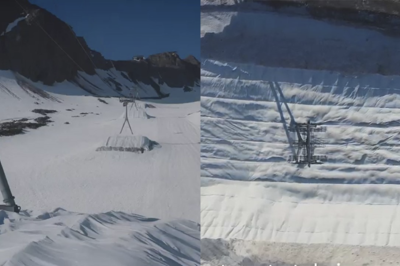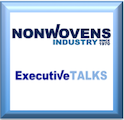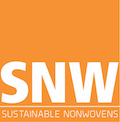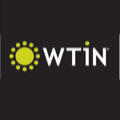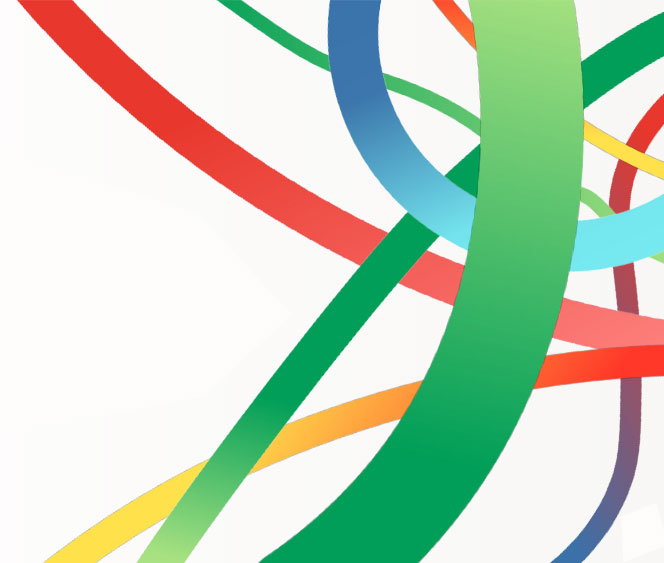
At EDANA’s recent 50th anniversary Nonwovens Get-together held in Brussels on April 28th, a special immersive room, built on the successful Nonwovens You Say? consumer-facing campaign, highlighted the many ways in which the nonwovens of the association’s members have enhanced life by ensuring safety, protection, hygiene, convenience, and comfort.
Home comforts
In the home for instance, the nonwoven membranes of Walki keep warm air inside the house without trapping moisture, ensuring that when the air humidity is low in winter, the vapour barrier property of the laminate is high, and when it’s high in summer, the barrier is low. These energy-efficient products save consumers money, while actively reducing greenhouse gas emissions.
So too, do the Tyvek weather barrier products of DuPont –nonwovens and breathable materials which have been playing a role in the sustainable performance of buildings for many years. When wrapped around a building, the unique structure of Tyvek prevents wind and rain from getting into and through the building envelope and as a result, helps enhance the insulation in the wall or roof and also enable heating ventilation and air conditioning (HVAC) systems to work more efficiently. Better indoor air quality is a further benefit.
RadiciGroup’s Respunsible is a spunbond material obtained from recycled polypropylene which also possesses the resistance and durability to be used in roofing and building membranes, while for carpet, Berry has developed the Punchback range of acoustic backing materials which incorporate 80-100% post-consumer recycled PET fibres. Punchback nonwovens both cut weight and improve acoustic performance under carpet tiles.
Cradle-to-Cradle
Beaulieu International Group (BIG) is meanwhile taking its Rewind carpet around the world to major exhibitions and events. In 2021, BIG became the first needlefelt producer to achieve stringent Cradle-to-Cradle certification for this product, which is completely latex-free and is manufactured in a waterless process using 85% less energy than competing products. As a mono-material product, it is also easily converted back into a pure recyclate.
Improving indoor air quality in residential, commercial, and industrial buildings is also the aim of Hollingsworth and Vose with its patented NanoWave filter media which provides significant energy cost savings while reducing CO2 emissions. Installed in HVAC systems, NanoWave filters also reduce the risk of harmful contaminants which can negatively affect health.
Pandemic response
Clean air and finer filtration were of course, key concerns for everyone in the fight against the Covid-19 pandemic, along with the general increased need for PPE worldwide.
The role of the nonwovens industry during that period was praised at EDANA’s event in Brussels by the European Commission’s Director General for Internal Market Industry, Entrepreneurship and SMEs, Kerstin Jorna.
“The nonwovens industry made a fundamental contribution to fighting the Covid-19 pandemic and I would like to pay tribute to all involved from the bottom of my heart,” she said, speaking via live video link with EDANA’s General Manager Pierre Wiertz. “The industry moved rapidly to supply emergency PPE by expanding manufacturing capacities on the spot, and played an active, creative and hands-on role.”
In this respect, products showcased in Brussels included Sontara, now a Glatfelter brand, which was a pioneering material in first introducing the concept of disposable gowns and drapes for the medical environment. Sontara fabrics provide medical apparel that is highly comfortable to wear and fulfils international product norms, minimising the risk of infections.
Ahlstrom- Munksjö developed a single-use filter during the Covid-19 pandemic that can be inserted into reusable face masks. The three-layer filter provides both excellent bacterial filtration and high breathability and can be easily replaced when required, to achieve significant material savings.
Given the drastic increase in demand for face masks from the beginning of 2020, nonwovens machinery builder Andritz also rapidly developed a fully automatic, high-speed face mask converting line.
These developments were just the tip of the iceberg in terms of innovation from the industry in response to Covid-19.
Full supply chain
EDANA was founded by just 12 companies in May 1971 and has now grown to represent 330 companies covering the entire nonwovens supply chain – from raw materials and machinery suppliers to the brands providing end-use products to a varied array of consumer and industrial markets.
Over the past half century, nonwovens production in Greater Europe has climbed fifty-fold, from around 63,000 tons in 1972 to 3.2 million tons in 2021. The industry in Europe has always been a net exporter and today over 25% of the raw materials it uses – both fibre and polymer based – are from renewable resources. This share is poised to improve significantly in the coming years.
Significant new raw materials developments featured within EDANA’s immersive room in Brussels included Lenzing’s Veocel branded wood-based cellulosic fibres which are derived from sustainably managed forests. Their production generates up to 50% lower emissions and water impact compared to generic viscose and after use, the fibres biodegrade in soil, compost and water.
Fiber Partner also develops biodegradable fibres for nonwovens made with an additive technology from Primaloft which enables polyester fibres to return to nature at a highly accelerated rate, while since 2001, Glatfelter has been replacing crude-oil-based synthetic heat-sealable fibres with plant-based material, such as polylactic acid (PLA) in its nonwovens for tea and coffee filters.
Fibertex Personal Care has meanwhile developed the first nonwovens from ISCC PLUS certified circular plastic. These materials maintain the same chemical and technical performance as nonwovens produced from conventional feedstocks.
Palexpo platform
All told, the European nonwoven roll goods industry directly employs around 27,000 people (and many more upstream and downstream) and generates an annual €7.9 billion in revenues, based on the 83 possible end-use applications EDANA has identified, spanning ten differentiated production technologies.
INDEX™23 at Palexpo, in Geneva, will once again be the global platform for nonwovens industry innovations.
